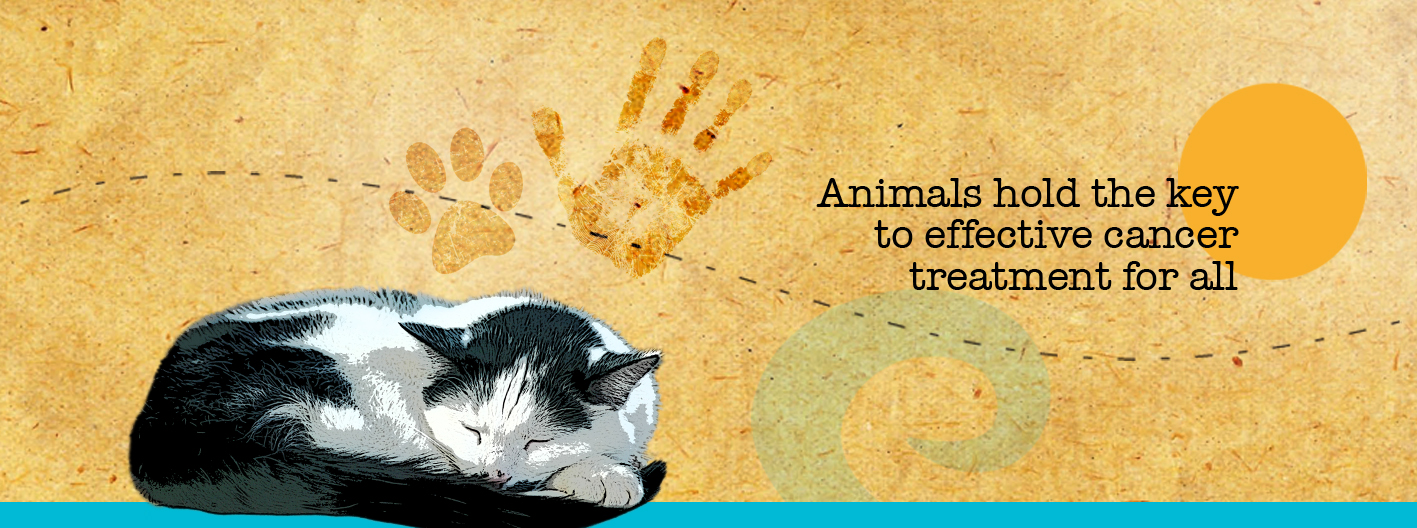


TYPES OF CANCER
The following are examples of types of cancer that are of particular interest in translational research programs.
CANINE NON-HODGKIN'S LYMPHOMA (NHL)
NHL occurs commonly in dogs. It is a common spontaneous tumour similar to most human NHL and is very chemo-responsive. Canine NHL appears to be a relevant model for preclinical testing of new chemotherapeutics, immune system manipulation, monoclonal antibody technology, half body irradiation, bone marrow transplant technology and other modalities either for initial induction or rescue of multiple-drug resistance.
FELINE NHL
NHL is the most common malignancy in cats and is initially quite chemo-responsive. Historically, significant subsets of feline NHL were composed of T cells (CD3 positive) transformed by the retrovirus feline leukaemia virus (FeLV). The prevalence of NHL in cats, and its documented retroviral association, suggests that feline NHL may be a relevant model for HIV-associated lymphoma in humans.
CANINE OSTEOSARCOMA
Canine osteosarcoma is strikingly similar to osteosarcoma in humans. Osteosarcoma in dogs varies only in its age of onset (dogs are more frequently affected in middle age, whereas the peak age of onset in humans is 14 years), its high incidence (nearly ten times that in humans), and in its fast progression. Osteosarcoma is a highly aggressive bone tumour, with a 90% metastases rate following amputation of control of the primary tumour. Its predictable metastatic rate and pattern make this tumour particularly attractive as a model for anti-metastatic therapies. Canine osteosarcoma is a readily available and highly comparable spontaneously occurring cancer that can provide a better understanding of this disease in humans. It is also useful as a model for any solid tumour that is difficult to control locally.
HAEMANGIOSARCOMA (HSA)
Haemangiosarcoma is a highly metastatic spontaneous malignancy arising most often in the spleen and occurring more commonly in dogs than any other species. HSA is highly comparable to angiosarcoma in humans, and due to its high metastatic rate and vascular origin, has significant potential as a model for investigation of anti-metastatic therapies, in particular antiangiogenic treatments.
CANINE MELANOMA
Melanoma is seen commonly in dogs. Unlike melanoma in humans, canine melanoma is not associated with sun exposure, and most cases arise in the oral cavity. However, canine melanoma closely resembles human melanoma in biology and response to treatment, and can serve as an important translational model, especially for anti-metastatic therapies.
SQUAMOUS CELL CARCINOMA
The majority of oral cancers in humans are squamous cell carcinomas. Canine oral squamous cell carcinomas, especially in the gum, are excellent models for radiation therapy studies on this type of tumour.
NASAL CARCINOMA
Canine nasal tumours have a biological behaviour similar to human nasal and paranasal sinus tumours. They are also an excellent model for studying radiation therapy approaches. With regard to radiation therapy there is a great potential to provide information pertaining to the relationship of tumour oxygenation, tumour proliferation, tumour profusion, and methods to modify tumour hypoxia.
CANINE PROSTATE CANCER
Canine prostate cancer is a good model for advanced stage, hormone non-responsive prostate cancer in men. We have perfected surgical techniques for prostatectomy in selected dogs with prostate cancer. This has allowed us to provide a durable model for investigating this horrible problem for dogs and men with this type of disease.
CANINE BRAIN TUMOURS
Certain brain tumours in humans still remain extremely difficult to treat. The relatively high incidence of serious glial tumours (high-grade gliomas) in some breeds of dogs provides an opportunity to learn much about this significant problem in both species.
Helpful Links
Australian Animal Cancer Foundation is a not for profit research charity dedicated to fighting cancer and finding a cure for cancer. Our pets may hold the answers allowing cancer cures in people and our beloved pets. The goal is to find these answers.
©
2024
AUSTRALIAN ANIMAL CANCER FOUNDATION